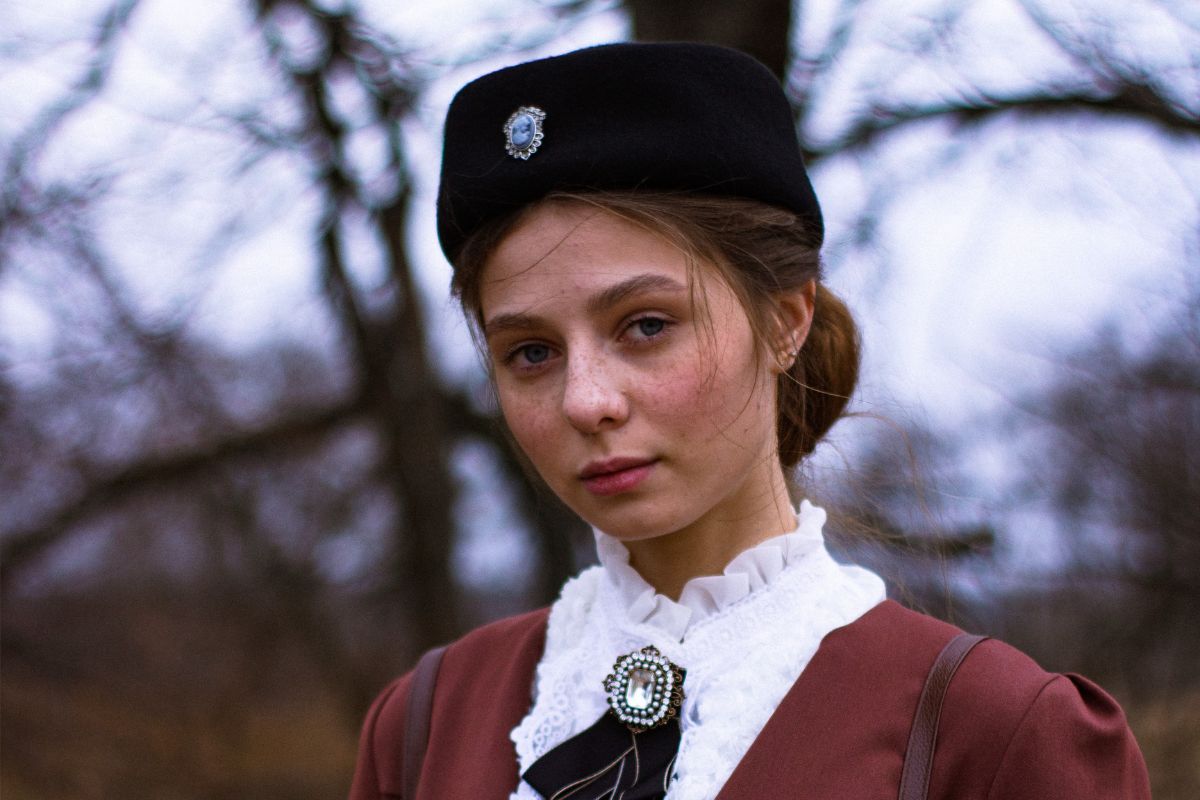When it comes to the best American Women writer of the 19th century, there are probably at least a few, if unfortunately not many, authors that come to mind.
However, for my money, there certainly isn’t an author quite like Edith Wharton.

Born into a wealthy, yet highly restrictive aristocratic household in New York in 1867, Edith’s work drew upon her intimate knowledge of high-society life and customs during the Gilded Age of the late 19th century.
This knowledge and her keen eye for a good story meant that, even though she only published her first book in her 40s, Edith Wharton has a massive library of novels, novellas, short stories, and other creative projects to her name.
She was also the first woman to win the Pulitzer prize for fiction in 1921, making her an icon of American fiction and women’s fiction as a whole.
So, Edith Wharton might not be your favorite author, but we respect this groundbreaking author under this roof!
Exacerbated and somewhat over-the-top support aside, there’s a good reason that Wharton’s work has stayed relevant almost 100 years after her death, and will likely stay that way for another 100 to come.
Don’t believe me? Well, you’ll just have to check out some of these books by her that I’ve collected for yourself, and see what millions of other readers have discovered for themselves!
The House Of Mirth
Starting with perhaps one of Wharton’s most iconic novels, we have The House of Mirth.
The fourth novel that Edith Wharton wrote, this particular story follows the life of one Lilly Bart, a young woman from a rich socialite family that was raised to be little more than an ornamental wife.
However, as her social debt and early adulthood slowly drain further and further away, Lilly feels the pressure to find a suitable husband before no one will have her, leaving her potentially cast out by her family.
It’s a damning mirror that Edith holds up to the upper-crust society of the gilded age that she likely had to be content with for much of her early life and adulthood.
It’s a show of just what was forced upon women who, even if their basic needs were met, are pigeonholed into roles and relationships that they have no agency or autonomy in deciding.
Given Wharton’s upbringing, it’s not hard to draw comparisons between Edith herself and the protagonist of the novel.
It’s probably what helps make Lilly such an authentic character, and why the audience, despite being separated by almost a hundred years of history and societal change, can empathize with her character.
Especially as her attempts at finding and holding a marriage are botched, she is seen further cast out, and those few luxuries that she did have met slip away from her.
Pros
- Lilly Bart is a tragic character that many people will be able to connect and route for, even as life unfolds around her.
- The societal analysis that Edith Wharton provides to her fellow New Yorker aristocrats is as deep and intricate as it is awful and repulsive.
- Probably Edith Wharton’s most moving and analytical book. And given her other novels, that’s saying something!
Cons
- While Edith writes Lilly as a three-dimensional character, very few if any other characters get this same treatment. They do serve their purpose as narrative tools for deconstructing their societal place, but not much else
The Age Of Innocence
Generally speaking, if people are talking about famous Edith Wharton books, they are usually either talking about The House of Mirth which we just covered, or The Age of Innocence.
This book is that good, it’s considered one of, if not THE seminal Edith Wharton book, especially for new readers!
It’s the golden age of New York, the beginning of the 1970s, and the dawn of the gilded age. Those who follow the rules of the high life and elites of the city are showered in decadence and luxury.
The rest? Those that don’t comfort, or are just not wealthy enough? Condemned to shame and squalor.
It’s in this world that we find ourselves following the path of one Mr. Newland Archer, who is betrothed to the upstanding and beautiful Mary Welland, organized by their parents.
However, a new countess enters the scene of Newland’s life, and his burning passion for her threatens to keep him faithful to both his betrothed and the very powerful families that surround them.
Newland is left with a harsh choice for someone of his station: Follow the path that has been set out for him, or dare to cross two of the wealthiest families in New York City, and follow his carnal passions?
Given that this is the novel that also earned Edith Wharton her Pulitzer for fiction award, you’d hope that it certainly holds up after over a hundred years. And thankfully, it does!
It’s a setup that practically writes itself, with a love triangle and all the social (and economic) contracts that must be followed to come with.
All while showing us the sort of decadence and high life enjoyed by those at the top, and what they stand to lose if they step out of line.
Pros
- Characters are one part sympathizing, and one part deeply flawed and selfish, in a way that you can’t turn away from.
- One part love story, one part cautionary tale, and one lesson about the wealthy aristocrats of the gilded age.
- An engaging read, it’s easy to see how this became a Pulitzer-Award-winning novel!
Cons
- The setting, now no longer contemporary, might feel a little out of place, and make it difficult to sympathize with some characters and decisions at first. It feels more period drama than biting current social commentary, as it once was.
Custom Of The Country
While many of the other books that we have in this list might not have made the same initial splash that the first two books in this guide did when they first came out, they have still garnered large followings of their own later on.
Custom of the Country is probably the best-known of Edith Wharton’s other less-highlighted works if that makes sense.
It’s certainly the book that many people will turn to if they haven’t already mentioned Age of Innocence or House of Mirth.
Not that we’re complaining about that, of course. It’s well-loved for a good reason!
Focusing on our heroine for the tale, Undine Spragg, a young woman from the Midwest of (relatively) humble middle-class origins.
As she arrives in the gilded age era of New York, she has ambitions of solely climbing that social ladder to the top. One way, or another.
However, not only does Undine discover that her family’s new wealth doesn’t seem to play by the same rules that the inherited, upper-crust wealth of the established homes, but the rigid rules that she must play by also apply to her tenfold, it seems.
It looks like new wealth just doesn’t stack up to old money.
However, through unscrupulous means, Undine finds that she eventually starts finding her way through marriages, one broken marriage and social tie after another.
However, as she soon learns, it’s a classic case of ‘be careful what you wish for’.
What does she learn, you might ask? Well, we wouldn’t want to spoil that discovery for you!
There’s just something magnetic about Undine in this book. Not just in her drive, but also her pettiness and spoiled-rotten attitude.
It’s a combination of petulance and toxic ambition that you can’t look away from. Like an awful horror movie, or a road accident.
If Lilly Bart and Newland Archer were victims of being born into and restricted by these old-fashioned aristocrats, then Undine serves as a cautionary tale of the lengths that needed to be taken to reach that spot from the outside, even one as close to it as her wealthy Midwestern family is.
So, when you’re finished reading the first two books that we’ve covered on our list, this is your next port of call for Edith Wharton content!
Pros
- A protagonist that stands out from many of Edith Wharton’s other works in many ways.
- A perfect monkey’s paw tale of trying to climb into the ranks of high society, and the potential chaos that can unleash for a single family.
Cons
- Some readers might find the length of this story a little bit too long for their tastes.
Ethan Frome
Next on my recommended reading list for Edith Wharton, we have a book that is a little on the shorter side when compared to the other pieces that we’ve covered here.
Ethan Frome isn’t technically a full-length novel, but a shorter novella.
However, for me, that just means that there’s no excuse for not trying to read through this story for yourself!
The titular Ethan Frome is a man who works on and owns a rather unproductive farm.
He struggles to make ends meet, and his frustration is not helped by his paranoid, suspicious, and difficult-to-be-around wife Zeena.
However, things start changing for Ethan when Zeena’s cousin, the young, vibrant, and beautiful Mattie Silver, is hired to the farm as a hired girl and an extra pair of hands.
At this point, Ethan struggles to commit to the marriage and relationship that he knows brings him no joy or to express himself and his love for this new bright spot in his otherwise rather bleak life.
In many ways, Ethan Frome is the more working-class equivalent of Newland Archer.
Caught in a situation in which he has little control, Ethan Frome is a man who is forced to contend with emotions that he is not allowed to convey, thanks to the societal customs of the time.
Pros
- The shorter length makes this an easy read for pretty much anyone.
- The love triangle allows for a great deconstruction of how men of the time could express themselves.
Cons
- The framed narrative used to follow the plot gives a distance to the events that some readers might enjoy, or find frustrating.
Closing Thoughts
So, there you have it!
Edith Wharton’s writing career might have been relatively short, but it left behind some truly phenomenal social commentary on the class that raised and ostracized her.
Frequently Asked Questions
How Many Books Did Edith Wharton Write?
Edith Wharton wrote 15 full-length novels in her life (one unfinished), 7 novellas, and 87 short stories upon her death in 1937.
When Did Edith Wharton Start Writing?
Edith Wharton didn’t start seriously writing until she was well into her 30s, and only first published her first book at 35 years old, in 1902, with The Valley of Decision.
- Peter James’s Bestselling 19 Roy Grace Books In Order - June 2, 2023
- The 5 Best Novels About Alexander The Great - May 26, 2023
- 38 Amazing Literary Books To Get Lost In - May 26, 2023
